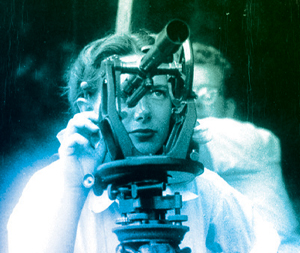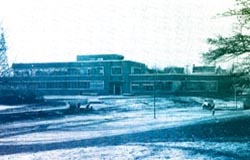

THE DAWN OF DISCOVERY
The Penn State College of Engineering’s research enterprise, which in the 2019-20 fiscal year exceeded $153 million in expenditures and helped propel the University’s research operation past $1 billion for the year, traces its roots back to the early 1900s and the founding of the Engineering Experiment Station.
Early research, published in the Engineering Experiment Station Bulletin, included “Results of Experiments on the Effects of the Form of A.C. Waves on the Life and Efficiency of Incandescent Lamps” and “Practical Suggestions for the Construction of Concrete Floors.”
Over time, the station’s work in diesel engineering and heat transfer in building materials earned international acclaim, but it wasn’t until the decades following World War II that research in the college expanded greatly. Developments such as the founding of the Ordnance Research Laboratory in 1945, the opening of the college’s nuclear reactor in 1955, and collaborative work to develop a heart-assist pump first used in 1976 greatly aided in Penn State’s rise to engineering research prominence.
The more than 400 researchers who call the college home today continue to break new ground across countless areas. From unveiling the structure of mutated cancer-causing proteins, to devising wearable sensors, to improving desalination membranes, to contributing to missions to other planets, the research of Penn State engineers is helping to confront society’s greatest challenges.
“As a college, we are strategically focused on continuing to grow our research enterprise,” said Justin Schwartz, Harold and Inge Marcus Dean of Engineering. “That growth starts with hiring top faculty and providing the resources they need to succeed.”
In their words
“(Engineering researchers) are looking for things that matter. They’re willing to team up and collaborate with people outside their own expertise to work as part of a team and to find solutions.”
Associate Dean for Research and Graduate Programs George Lesieutre discussing recent research growth in the college.

Did you know?
Throughout the 1950s, research expenditures in the college climbed steadily, with the Ordnance Research Laboratory and the Ionosphere Research Laboratory (IRL) leading the way. The IRL, with a budget of nearly $1 million by the end of the decade, funded work exploring chemistry and physics in the upper atmosphere, resulting in important applications for areas such as space travel.



